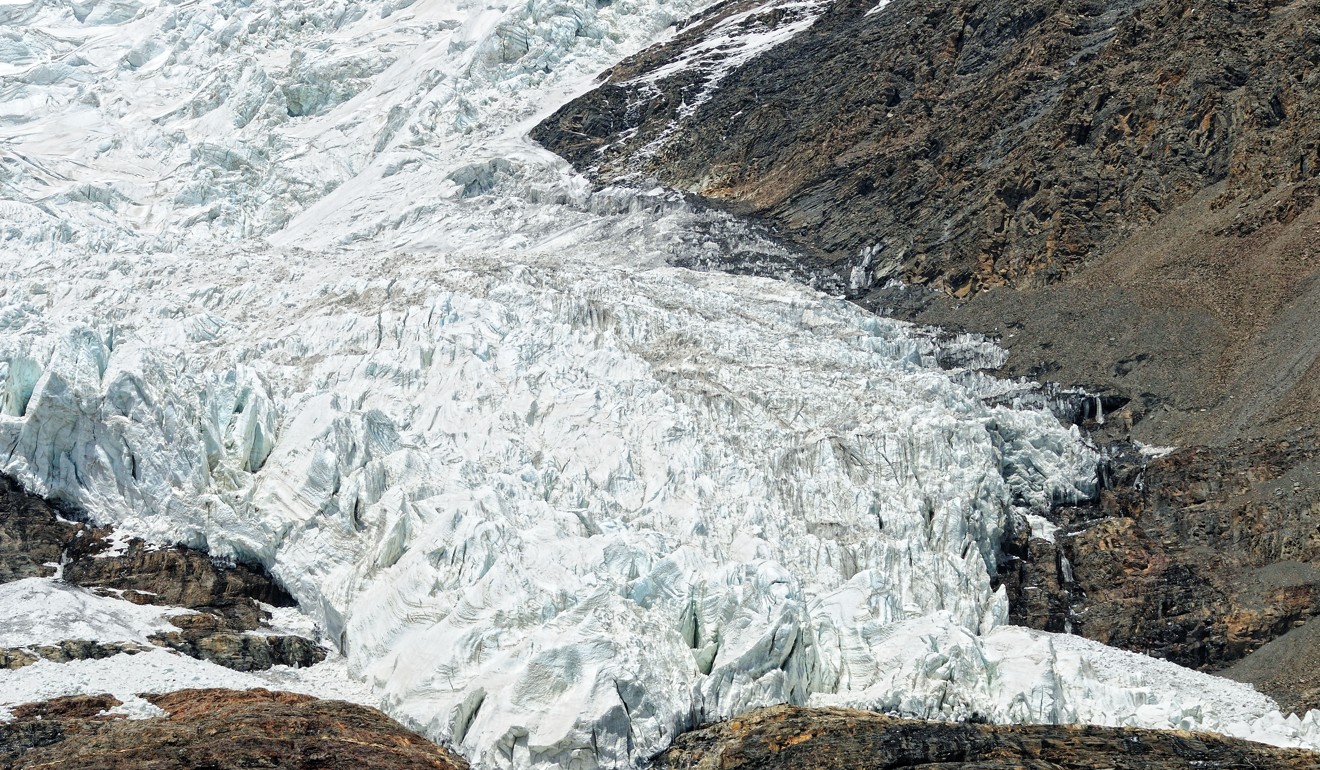
Climate change is causing Himalayan glaciers to melt twice as fast, research shows
- Study by US scientists says changes to seasonal run-offs pose growing threat to water supplies for 800 million people
- Claims based on 44 years of satellite images showing retreat of 650 glaciers across China, India, Nepal and Bhutan
The rate at which Himalayan glaciers are melting because of climate change has doubled over the past two decades, creating a huge threat to the hundreds of millions of people who rely on the run-off from them for their water supply, according to a new study by American scientists.
The claims were made by academics from Columbia University’s Lamont-Doherty Earth Observatory and the University of Utah in the United States based on their assessment of satellite images taken across China, India, Nepal and Bhutan over the past 44 years.
The scientists looked at images – including declassified ones taken by US spy satellites – of about 650 glaciers spanning 2,000km (1,250 miles).
They showed that between 1975 and 2000, the glaciers lost an average of about 25cm (10 inches) of ice per year. But since 2000 that rate has accelerated to about 50cm a year.

The study, which is published this week in the peer-reviewed journal Science Advances, concludes that while several factors, including changes in precipitation levels and soot from the increased consumption of fossil fuels, have contributed to the acceleration, the overriding cause of the faster melting is climate change.
According to the study, between 2000 and 2016, the average temperature in the region was 1 degree Celsius higher than it was over the previous 25 years.
“This is the clearest picture yet of how fast Himalayan glaciers are melting over this time interval, and why,” said lead author Joshua Maurer, a PhD candidate at Lamont.
Climate change ‘poses threat to global peace’
The area around the Himalaya-Hindu Kush mountain range and the Tibetan Plateau is widely known as the Third Pole because it is home to the largest concentration of glaciers and ice fields outside the polar regions.
About 800 million people depend at least in part on the seasonal run-off from Himalayan glaciers for irrigation, hydropower and drinking water. The accelerated melting appears so far to be swelling run-off during warm seasons, but the scientists project that this will taper off within decades as the glaciers lose mass.
Liu Junyan, a Beijing-based campaigner for Greenpeace East Asia, said the melting of the Himalayan glaciers posed huge risks for the regional water supply, as it was the source of more than a dozen rivers.
“The melting will aggravate the water crisis,” she said. “And based on the data we have, it is obvious that the rate at which the glaciers are retreating has accelerated in recent years.”
Eco-anxiety explained: how to avoid it and save the world
Controlling the rise in global temperatures at 1.5 degrees or less by the end of the century was imperative, she said.
“The rate of warming in the Tibetan Plateau is higher than on the plain area,” she said. “In the past 50 years, the rate there has exceeded twice the global average, and it is now at the highest it has been in the past 2,000 years.”

Another study released by the Hindu Kush Himalayan Monitoring and Assessment Programme, a platform for researchers and specialists working in the region, estimated that by the end of the century the region’s glaciers will have retreated by at least a third – from 2017 levels – even if the rise in temperature is kept within the 1.5 degree target.

